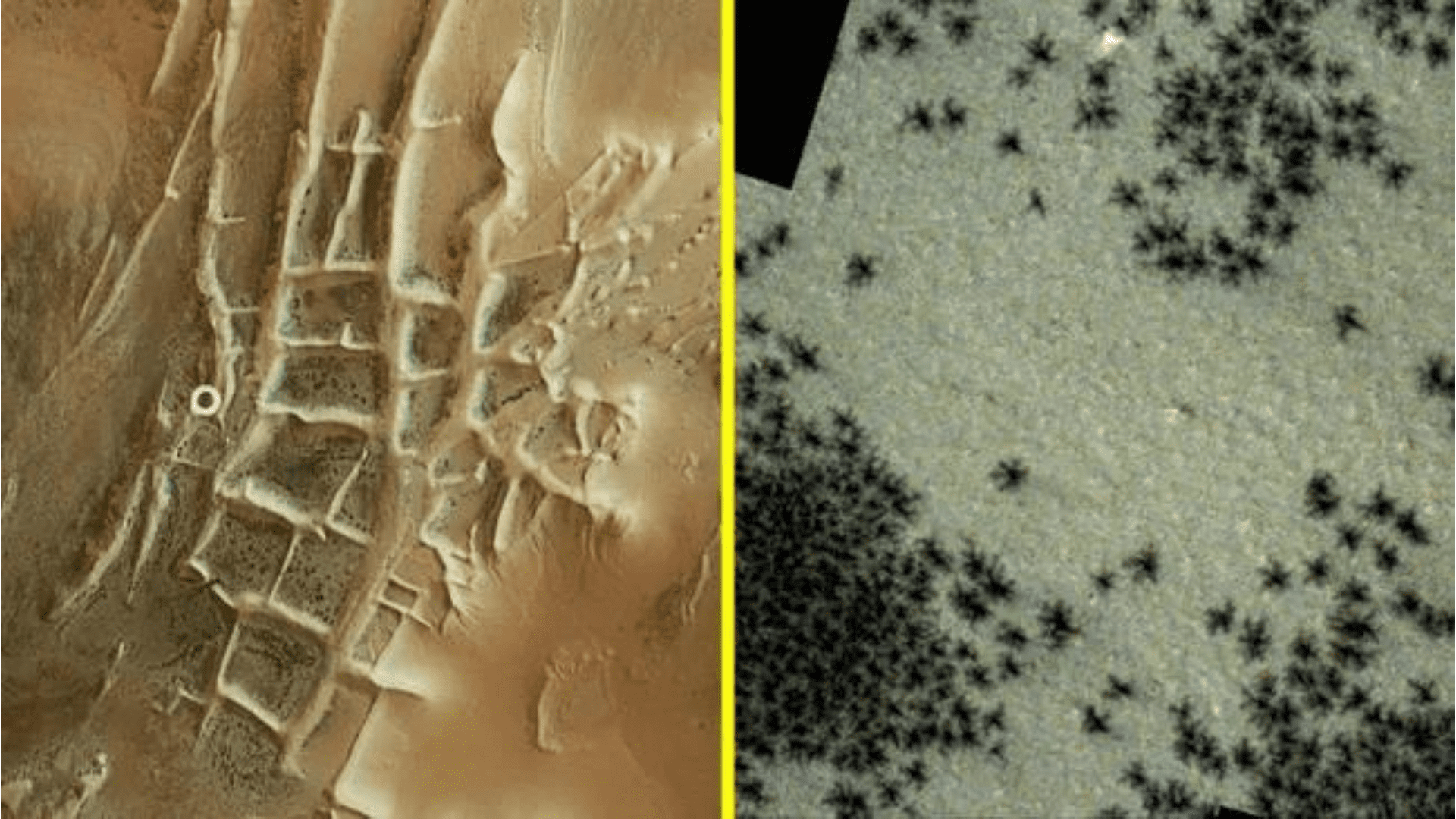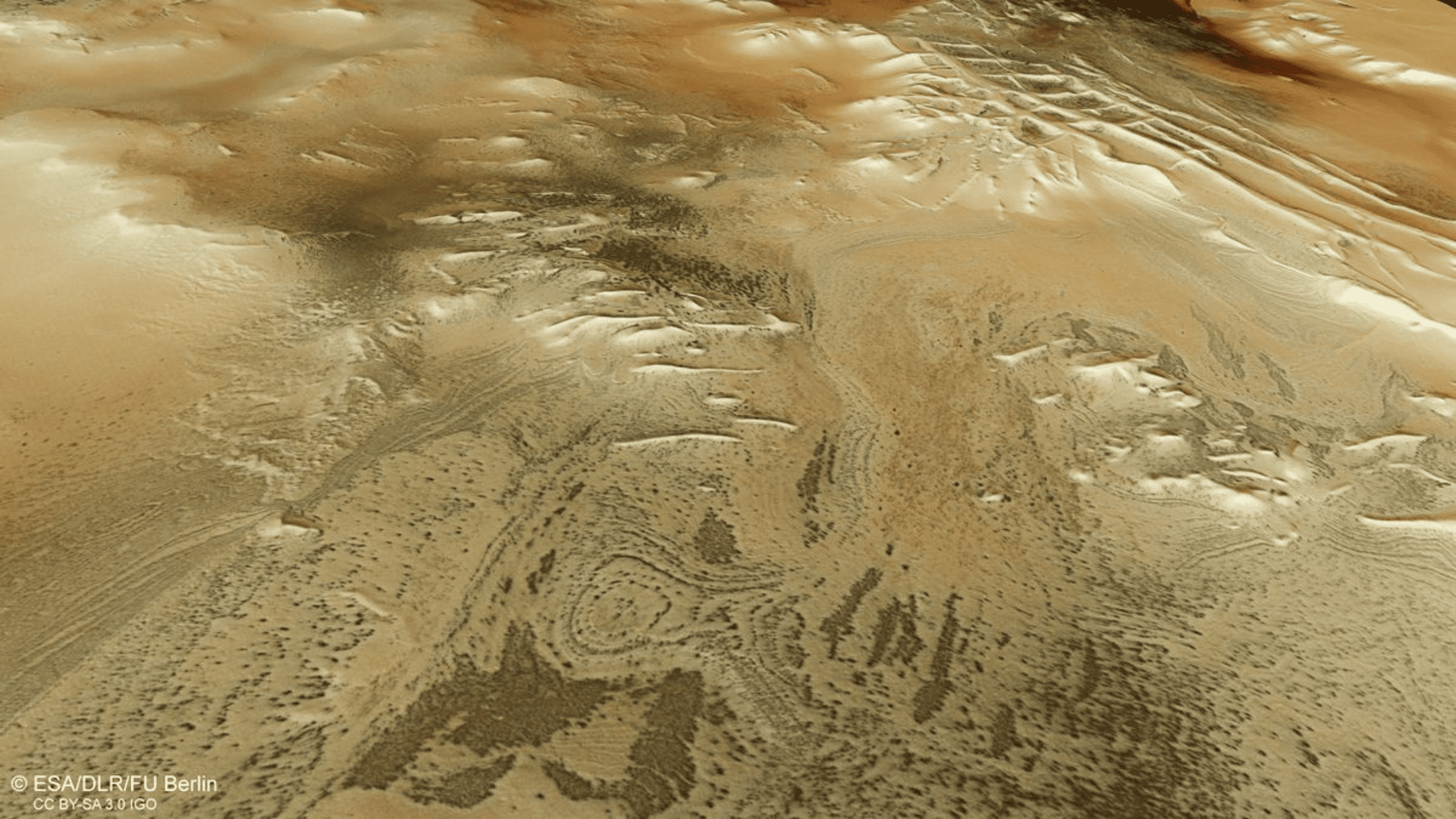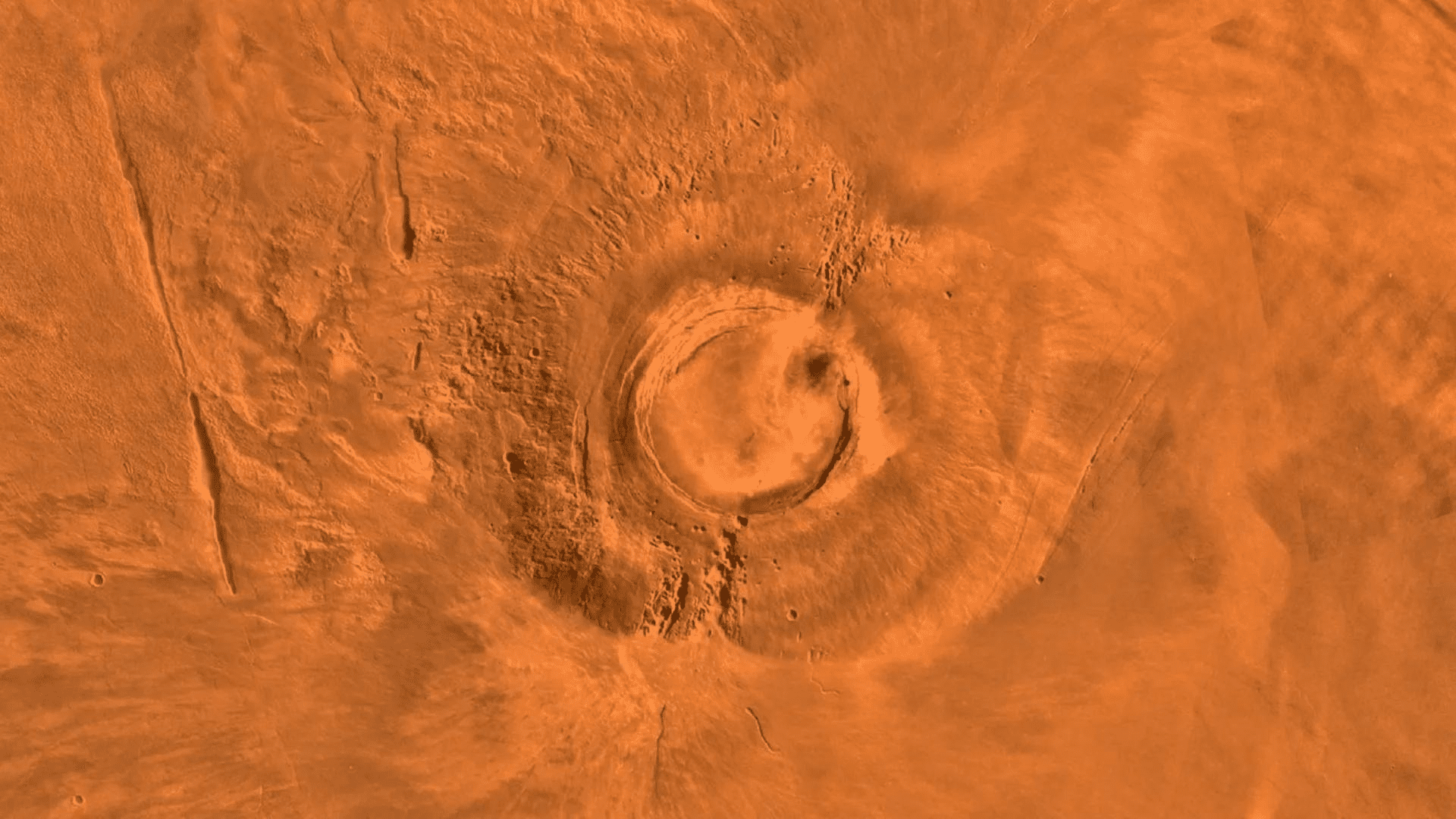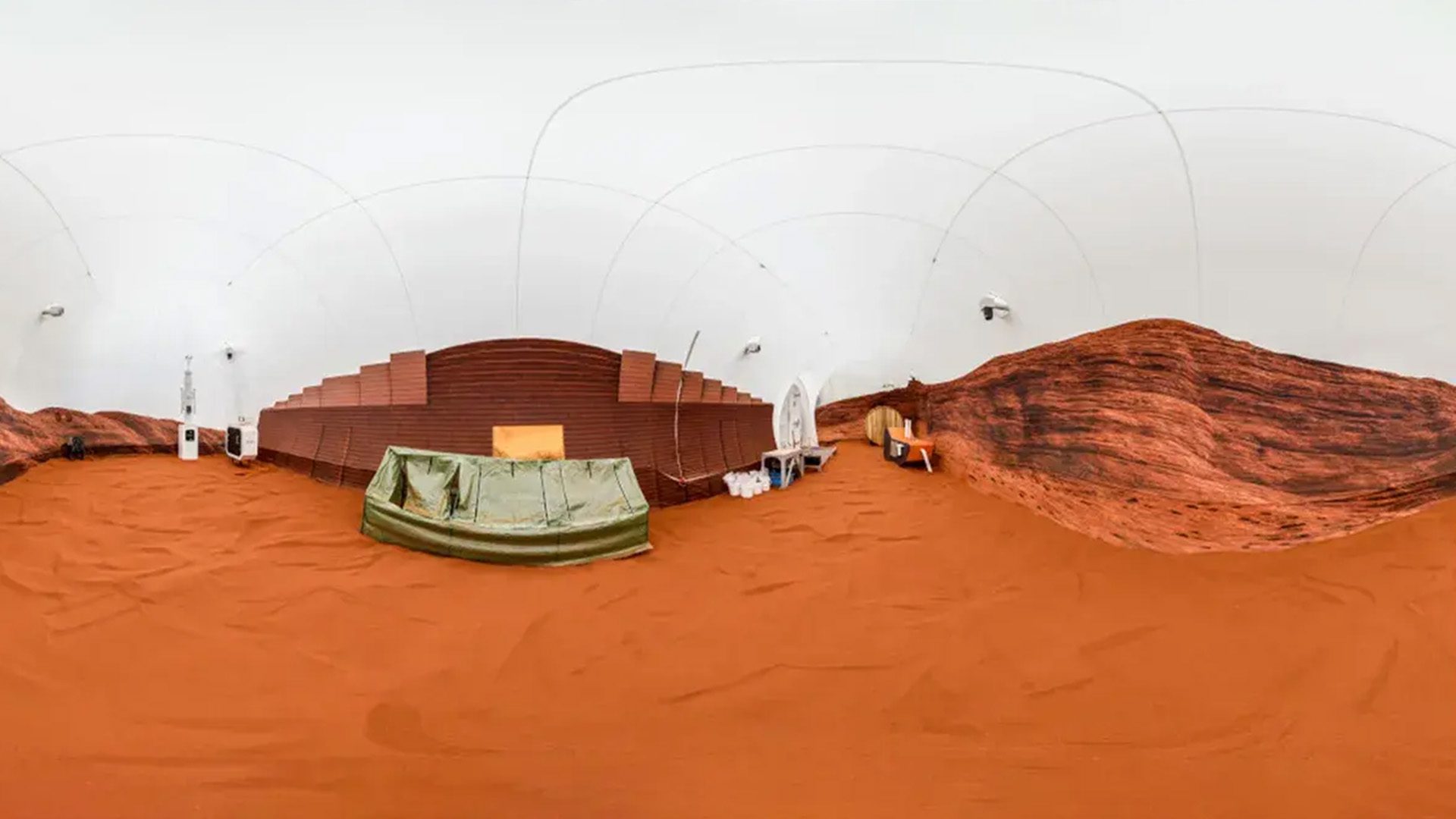There are a lot of mysterious parts of Mars that astronauts and scientists want to learn more about. The red planet has so many stones we all want to turn over. One mysterious area on the surface of Mars is “Inca City.” Moreso, the creepy, black “spiders” that a satellite captured pictures of.

Martian Spiders?
Have no fear, the hundreds of black, Martian “spiders” are not the eight-legged critters. Instead, they are seasonal eruptions. The European Space Agency (ESA) captured the images of seasonal carbon dioxide eruptions, a regular Spring phenomenon on Mars. These creepy formations are on the Red Planet’s formation known as Inca City in its southern polar region. The ESA’s Mars Express Orbiter and ExoMars Trace Gas Orbiter captured the photos. The images show dark clusters that look like a family of spiders cluttered together.
These formations are channels of gas measuring 0.03 to 0.6 miles across. When the weather gets warmer during Martian Spring, layers of carbon dioxide ice start to melt. Additionally, the warmer weather causes the lowest layers of ice to turn to gas. It’s known as sublimating, or when solids turn to gas without going through the liquid stage.
Here’s how it happens. First, the gas expands and rises. Then, it explodes out of the layer of ice on top of it. This carries dark dust from the solid surface. Dust shoots out from the ice like a geyser and onto the top layer, creating a pattern that resembles a spider that you see in the photos. According to the ESA, in some places, geysers burst through the ice, which was up to 3.3 feet thick.
Explore Tomorrow's World from your inbox
Get the latest science, technology, and sustainability content delivered to your inbox.
I understand that by providing my email address, I agree to receive emails from Tomorrow's World Today. I understand that I may opt out of receiving such communications at any time.
Inca City

The area in which the carbon dioxide geysers burst is Inca City. It’s a mysterious region of Mars also known as Angustus Labyrinthus. It gets its name for its linear ridgelines resembling a city’s ruins. Astronomers once believed the ridgelines were petrified sand dunes. They even thought they were remnants of ancient Martian glaciers.
However, in 2002, the Mars Orbiter discovered that Inca City is part of a circular feature approximately 53 miles wide. According to Live Science, “it may be an old impact crater.” It suggests that the geometric ridges may be magma intrusions. It’s possible that these intrusions rose from Mars’ heated crust after being hit by a rogue space rock. If that is the case, it would have been filled with sediment, which has since eroded, revealing magma formations that look like ancient ruins.
It’s another one of Mars’ many mysteries that astronomers continue to explore and hope to one day reveal the hidden secrets of the Red Planet.






